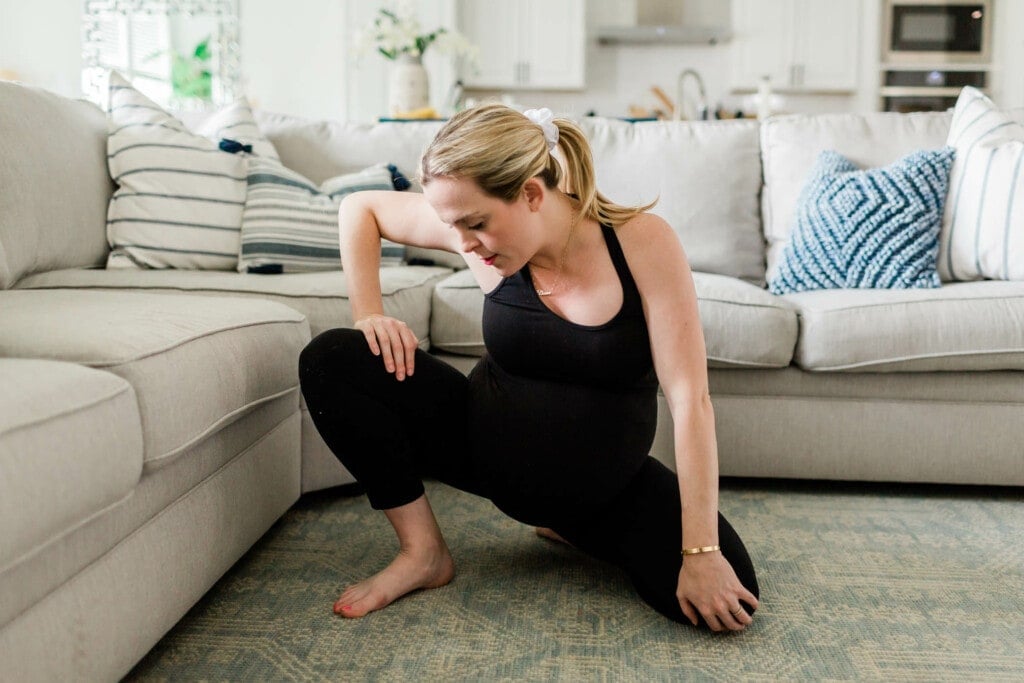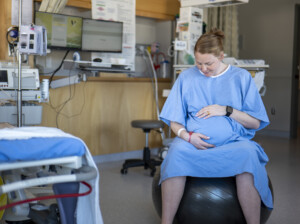Once you are no longer in early labor and have transitioned into active labor, you’ll feel a big difference as your body works hard to give birth to your baby. You’ll recognize a shift because you’ll have strong and consistent contractions that make it undeniable that you are indeed in labor. If you’re wondering what active labor is, what to do in this phase of labor, and which are the best positions to do in active labor, this is what you need to know.
What is active labor?
There are three phases in the first stage of childbirth: early labor, active labor, and transition labor. Active labor is when your cervix is 6 centimeters dilated and/or your contractions are 5 minutes apart, each contraction lasts 1 minute long, and that is a consistent pattern for 1 hour. This is known as the 5-1-1 rule. Your contractions are stronger, longer, and closer together, and it doesn’t slow down if you change what you’re doing or if you change positions. This is when your doctor will recommend that you start heading to the hospital.
What are some things that you can do to help your body during active labor? The big thing is to move your body! Moving your body encourages your contractions to keep coming and helps open your pelvis to bring your baby down low. We’ve covered what the best positions to do in early labor are. Now here are the best positions to do when you are in active labor. These will help your body progress to the next phase and keep you more comfortable.
Best Positions for Active Labor
Squatting
Squatting is a great position to do in active labor because it helps widen your pelvis’s opening. When your pelvis is widened, it causes your baby to move downward, which then causes your baby’s head to press against your cervix. The pressure of your baby’s head against your cervix helps it open and dilate. This is a good thing because you need your cervix to dilate to 10 centimeters so that you can begin pushing. This squatting position can help you get there sooner. I recommend squatting next to your bed or a couch or a chair–anything to support yourself while you are in a squat position.
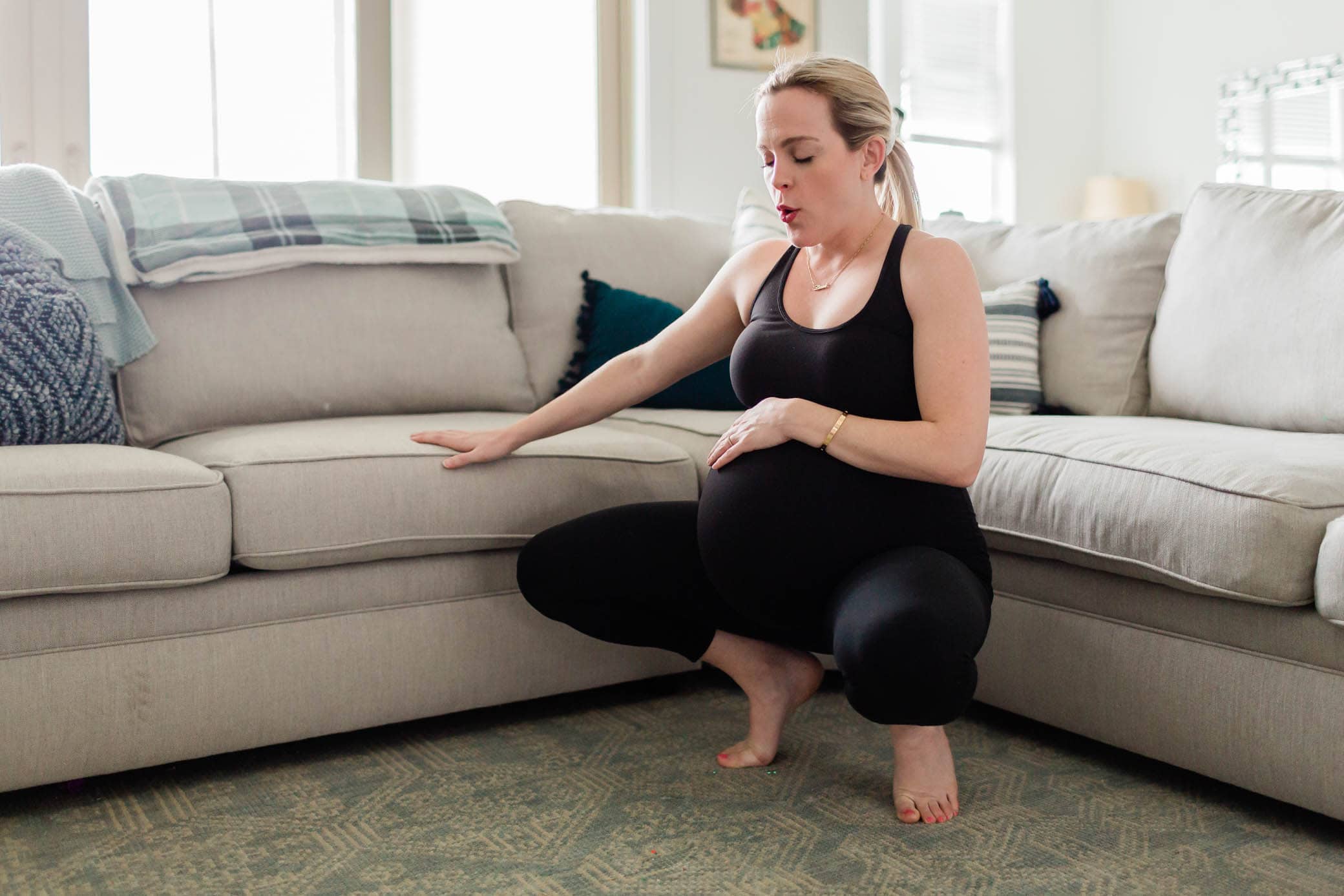
Leaning forward
A common position that women naturally move into when experiencing a contraction is to lean forward. Standing up while leaning forward is a great position to do in active labor. It allows you to take advantage of gravity and encourage your little one to keep coming down. As a result, dilation tends to occur more quickly. It also gives the laboring woman something to brace and rest on while experiencing contractions. Not only that, leaning forward helps keep your baby in a favorable position and off of your back. This is really helpful if you experience back labor. (Back labor is when you feel your contractions and your baby’s head pressing against your spine and sacrum, which can be extremely painful.) When you’re leaning forward, you’re moving your baby forward, taking the pressure off your back.
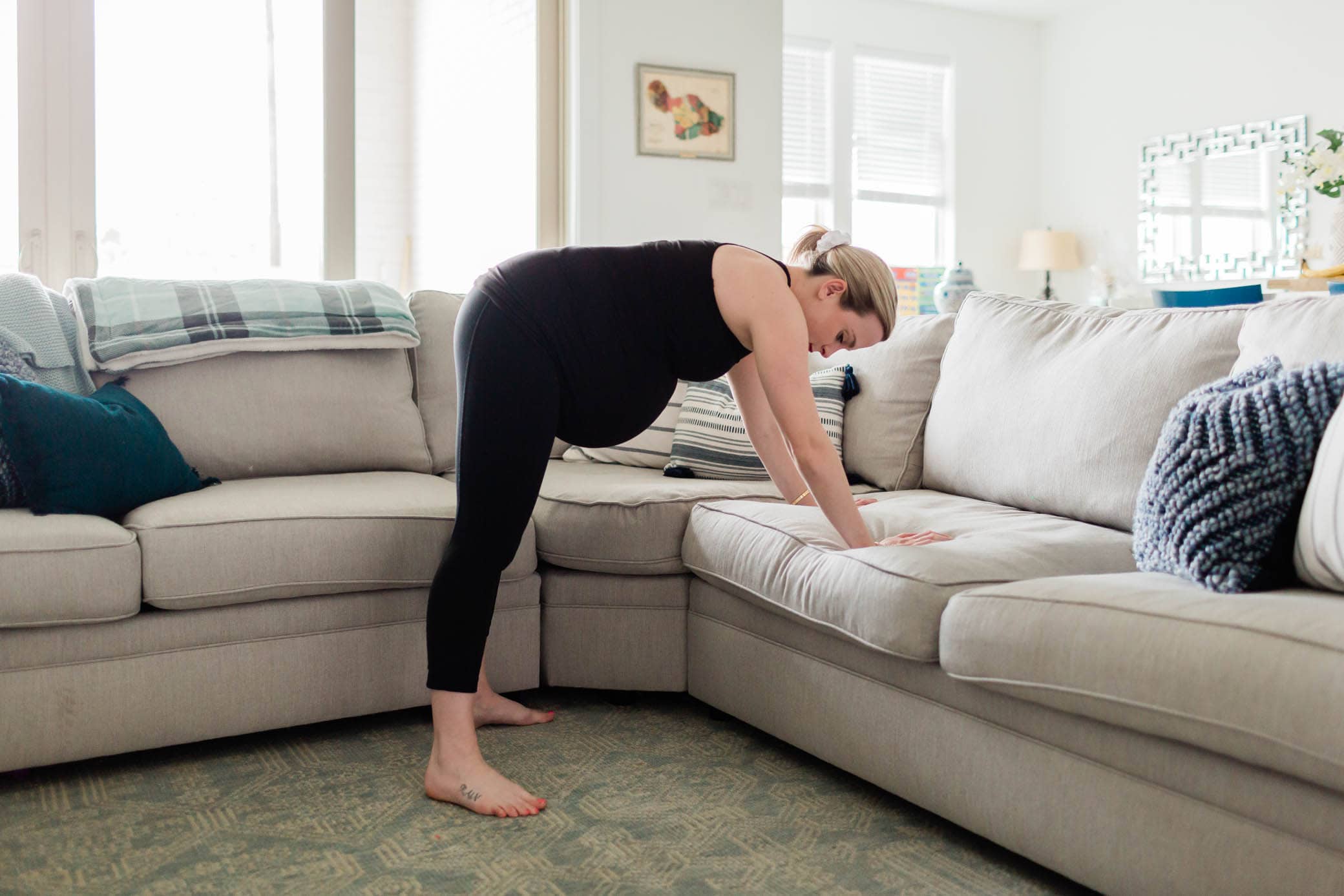
Climbing stairs
If you want to help speed up your labor or rotate baby in a more optimal position, climbing stairs can help. Climbing stairs opens your pelvis and causes a rocking, back-and-forth tilting motion. Being upright and opening your pelvis as you lift your leg with each step lets gravity do its work to bring your baby down. This helps get your baby engaged on your cervix to facilitate dilation. And that motion you do with each step can help shift and rotate your baby in a better position off of your back if you’re experiencing back labor. Another thing, climbing stairs is great to do if your labor is stalling out.
If it’s possible and safe to do, we recommend climbing two steps at a time to help open your pelvis even more.
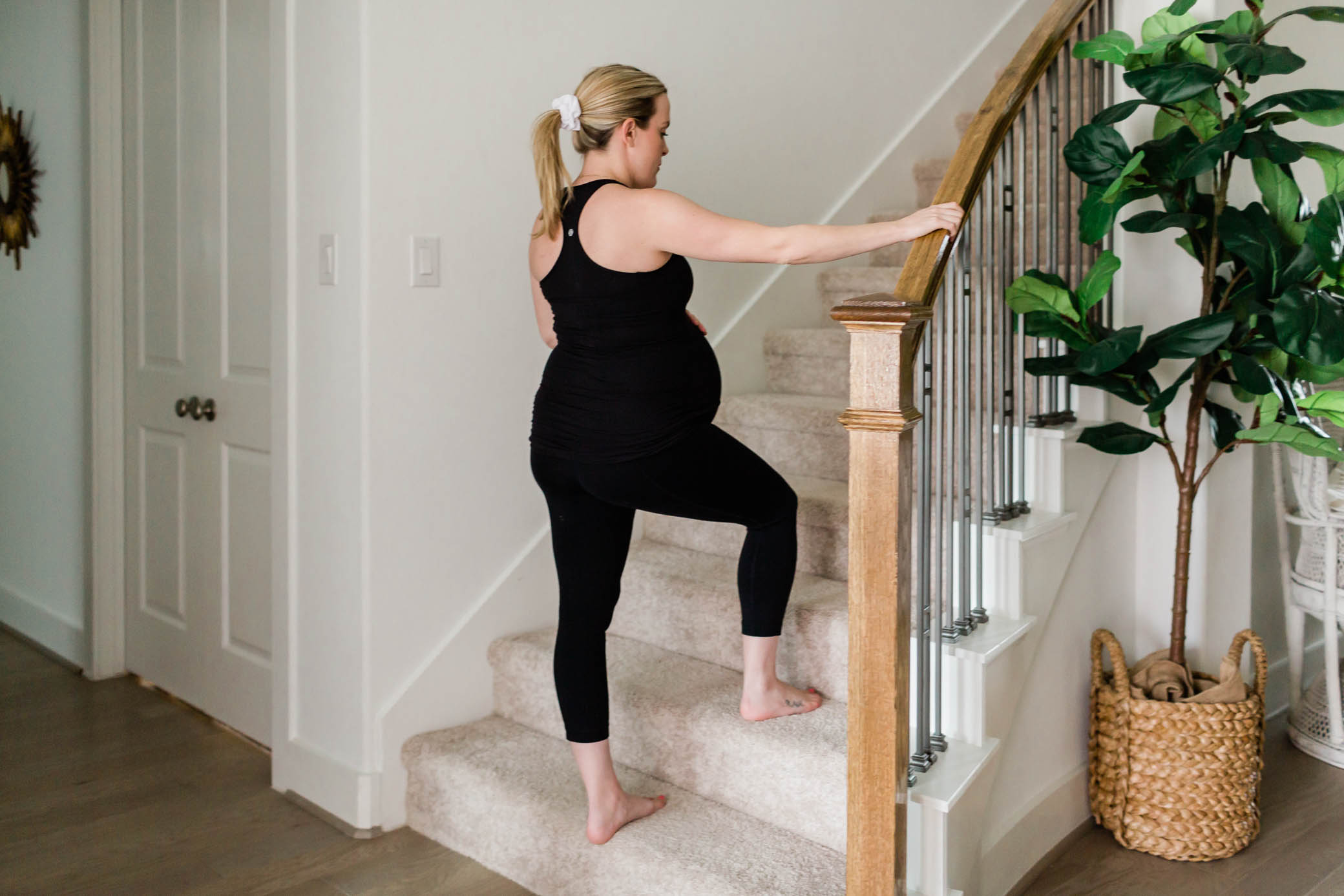
Lunges
Lunges are a great and simple technique to do in active labor. It’s a technique to rock open the mid-pelvis between the ischial spines, opening the most narrow part of the pelvis to bring your baby down. Lunging in labor is not the same type of lunge that you do during a workout. When you’re working out, you’re doing a walking type of lunge, stepping one leg in front of you, then kneeling, and stepping back. The type of lunge that you do in labor is stepping up one leg to the side of your body and lean into the lunge.
Once you reach active labor and have regular contractions, moving into the lunge position can help speed things up. Prop up your foot on a chair, stool, or on a step. Wait until you feel a contraction coming and get into this position. After the contraction ends, put your leg down to relax. This helps prevent your legs from getting overtired.
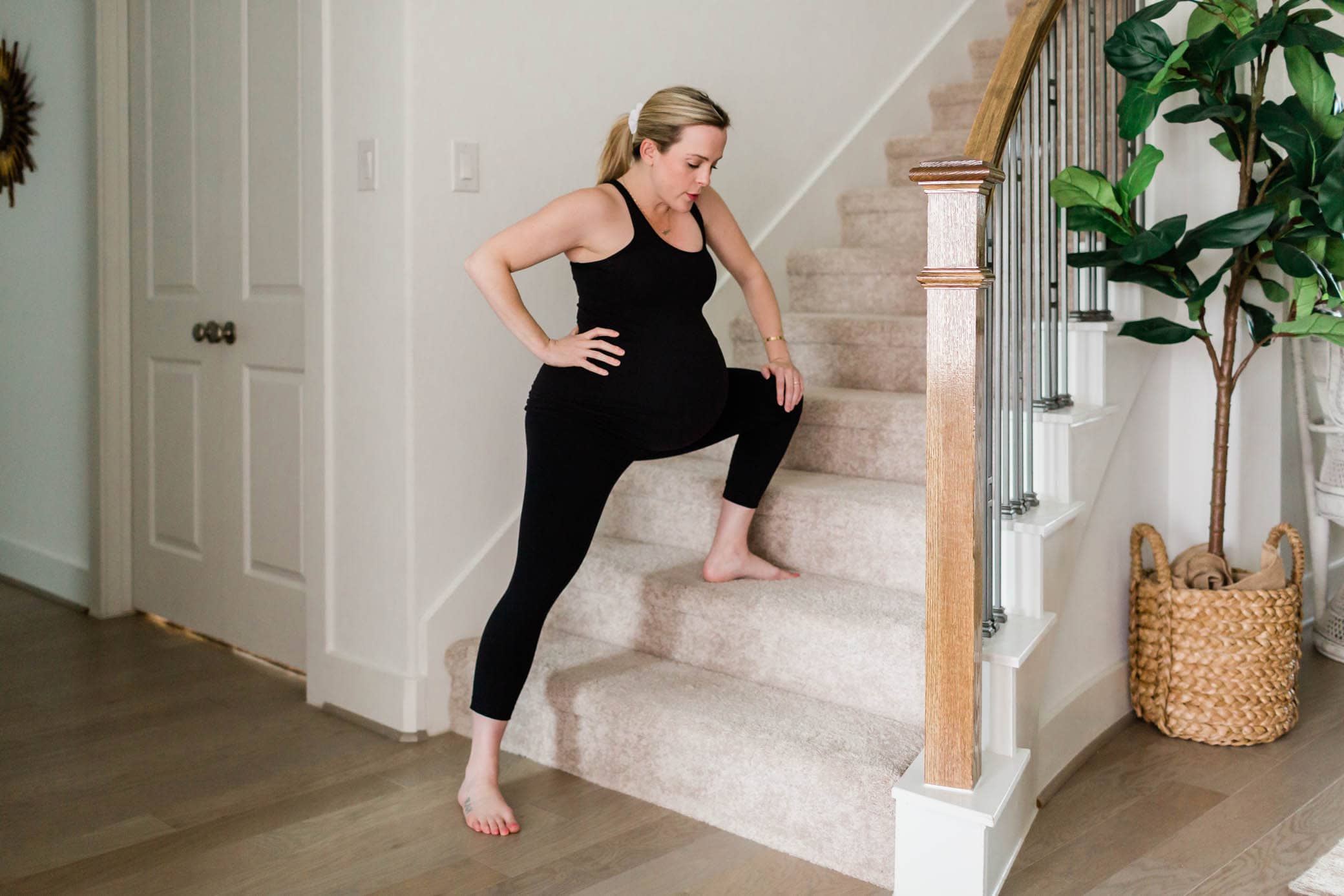
Swaying or slow dancing
A position that I recommend all of my birth doula clients to do in active labor is to stand upright and rock or sway from side to side. Once you are tired of walking or if your contractions get closer together and you find it difficult to walk, this is a great position to get into. It’ll be easier for you to stay in one place and rock your hips or sway because motion can help reduce your labor duration. Place your arms around your belly and sway from side to side.
You can also lean on your partner for support as you rock and sway, almost like you are slow dancing together during contractions. Wrap your arms around your partner’s neck or waist as you sway back and forth. This can help both you and the baby by easing pressure on the pelvic area and encouraging the baby to move into the correct position in the pelvis. Feeling your partner’s love and support can also increase and ease the contractions as it raises your oxytocin.
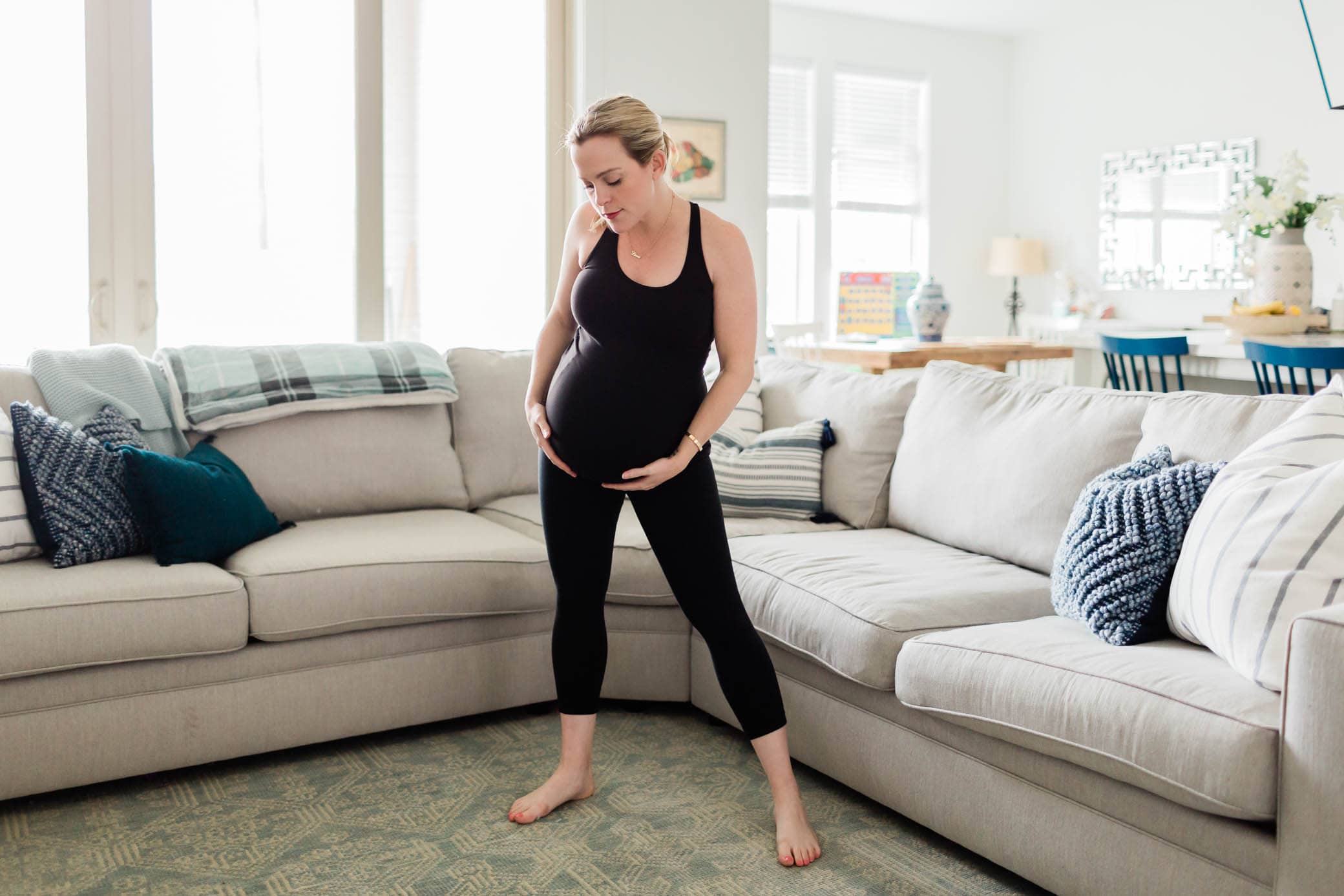
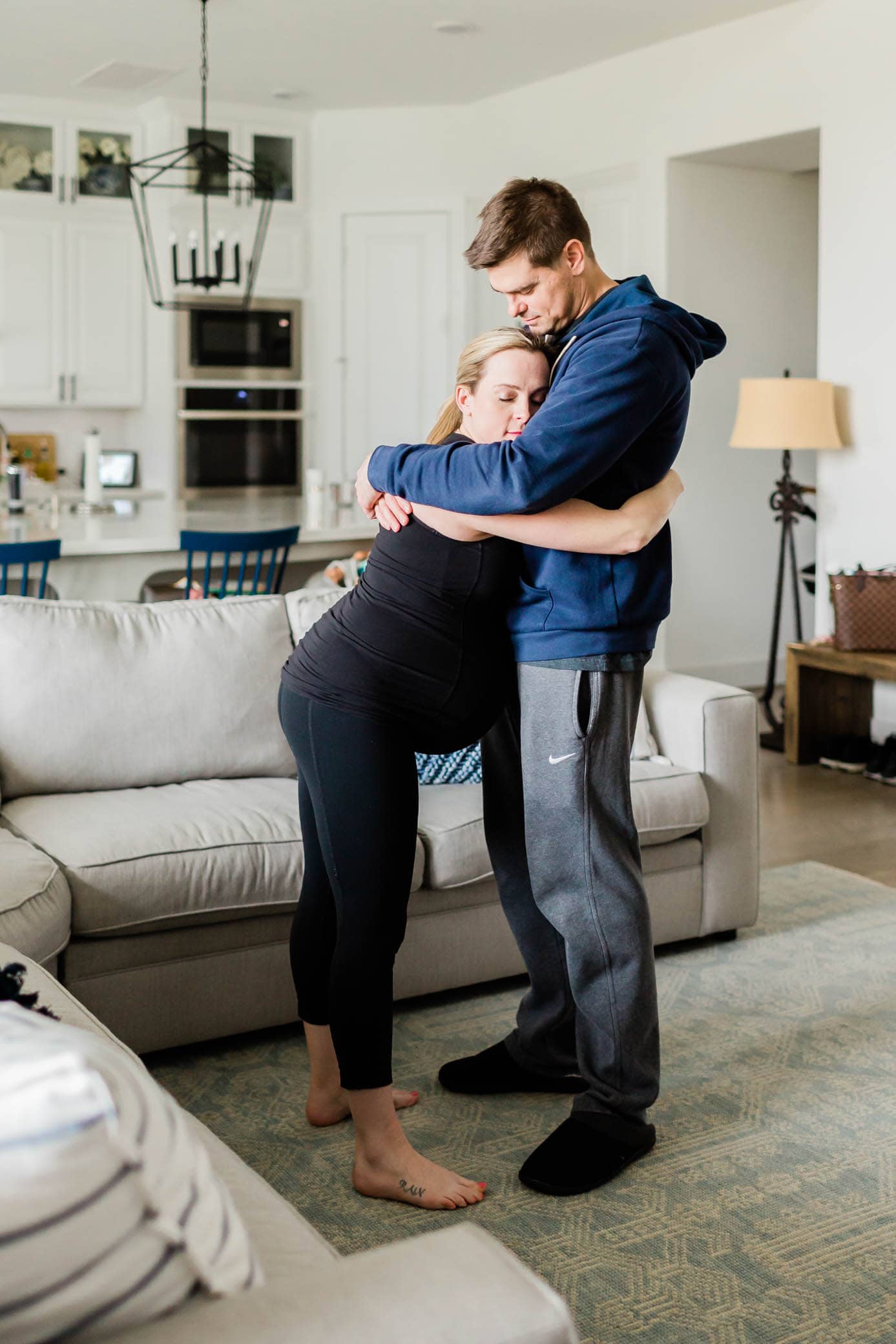
Hands-and-knees
Another good position to do in active labor is hands and knees. Doing the hands-and-knees position during labor can increase the likelihood of spontaneous vaginal birth and reduce pain/stress, improved uterine blood flow, and enhance fetopelvic relationships.1,2,3,4 So don’t be afraid or embarrassed to get on your hands and knees on the bed or the floor during labor. This position has also been beneficial for laboring women with a fetus in the occiput-posterior (OP) position.1 You’ll take the pressure off your back and spine, which can ease back pain. Also, kneeling while leaning forward can open your pelvis.
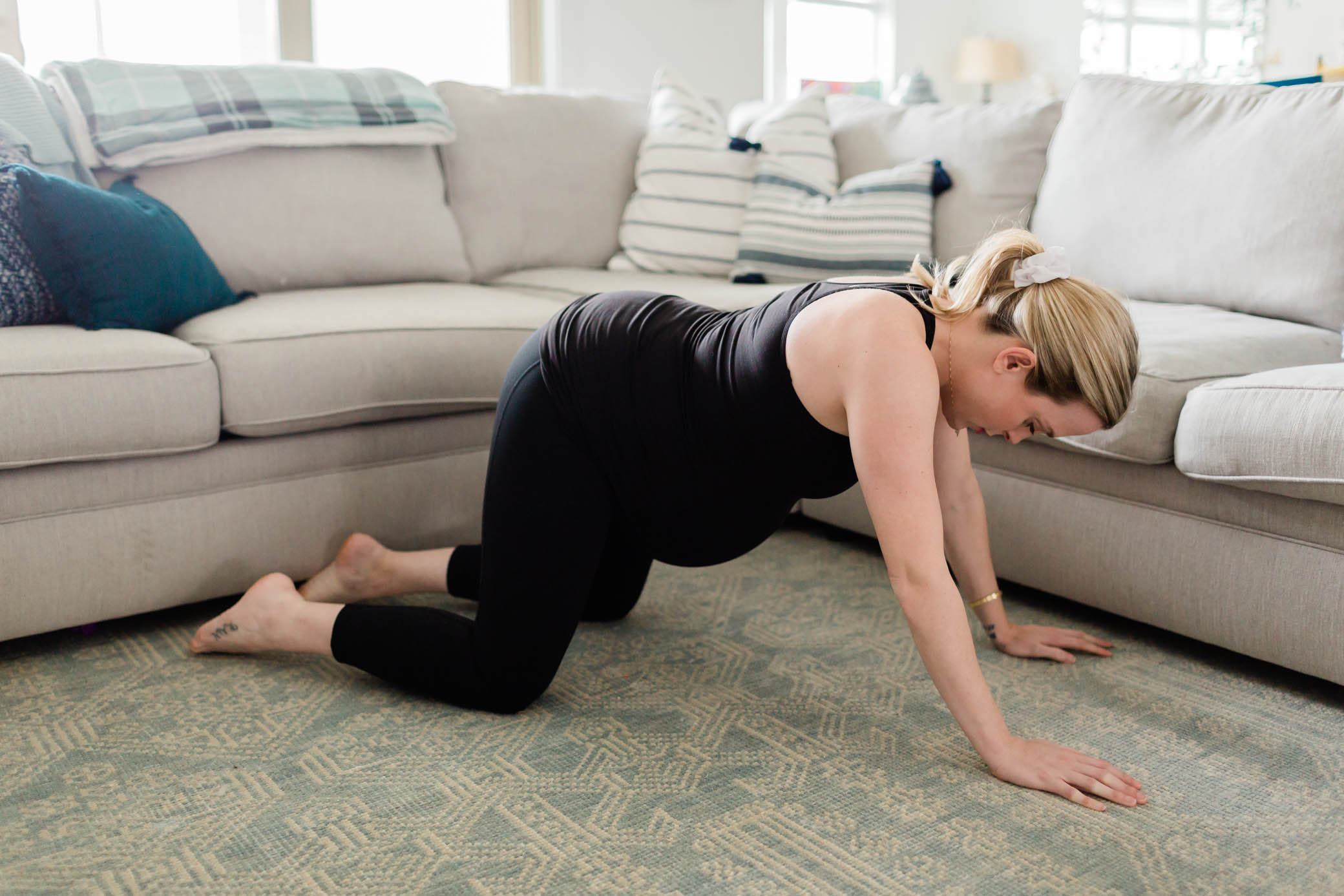
Asymmetrical lunge
Movement and upright positions in active labor are very beneficial for the laboring woman as they can help with the frequency, length, and efficiency of contractions. These positions use gravity to their advantage and help the baby move down more quickly. But when contractions become too strong and tiring to stand, doing an asymmetrical lunge on the floor is a good position to continue encouraging your body to open and your baby to come down. Asymmetrical positions help change the pelvis’s shape to help the baby find the best position for birth.
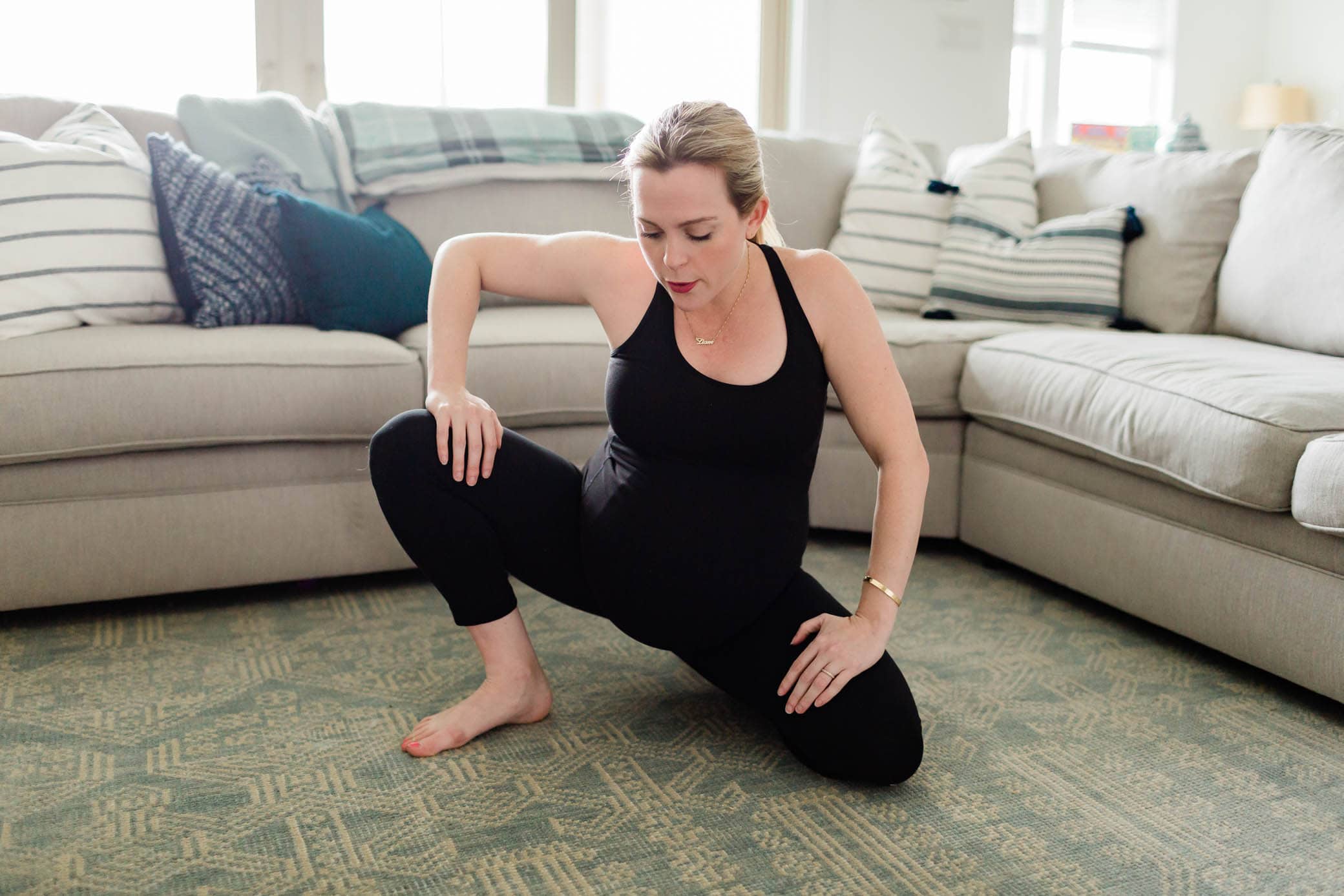
These positions can help laboring women during active labor in many ways. They increase comfort and reduce pain, help with distraction, and change the pelvis’s shape and size, which can help the baby’s head move into the optimal position for birth.


















